Better Homes and Gardens online has a great article that details the elements of a cottage garden, and one of those elements is that of curved, natural pathways. My garden is a veritable maze of curved pathways:
“Create soft meandering pathways instead of those that follow a straight, structured line. Many paving materials work in cottage gardens, including wood chips, stone, old bricks, and flagstone.”
I currently live in the Ozark mountains, and there is no shortage of big, flat rocks here. For one, I have plenty of stones to create curvy paths in every direction.

Jacki Kellum Garden Wall
And those paths all begin right outside my back door, where I have created a little, outside sitting room–complete with the cedar walls that I built there.

Jacki Kellum Garden Wall

Fountain Next to Jacki Kellum Garden Wall
In reality, I built a pair of walls that meet at a corner at the edge of my patio.
Better Homes and Gardens also advocates the use of vintage accessories in a cottage garden, and along my garden pathway, you will see one vintage piece after another:
“Accessorize your cottage garden with antique or vintage items. You’re more likely to find garage-sale bargains than high-ticket purchases in a cottage garden. An old, dented watering can or a gate with peeling paint can work nicely.”

Jacki Kellum Garden
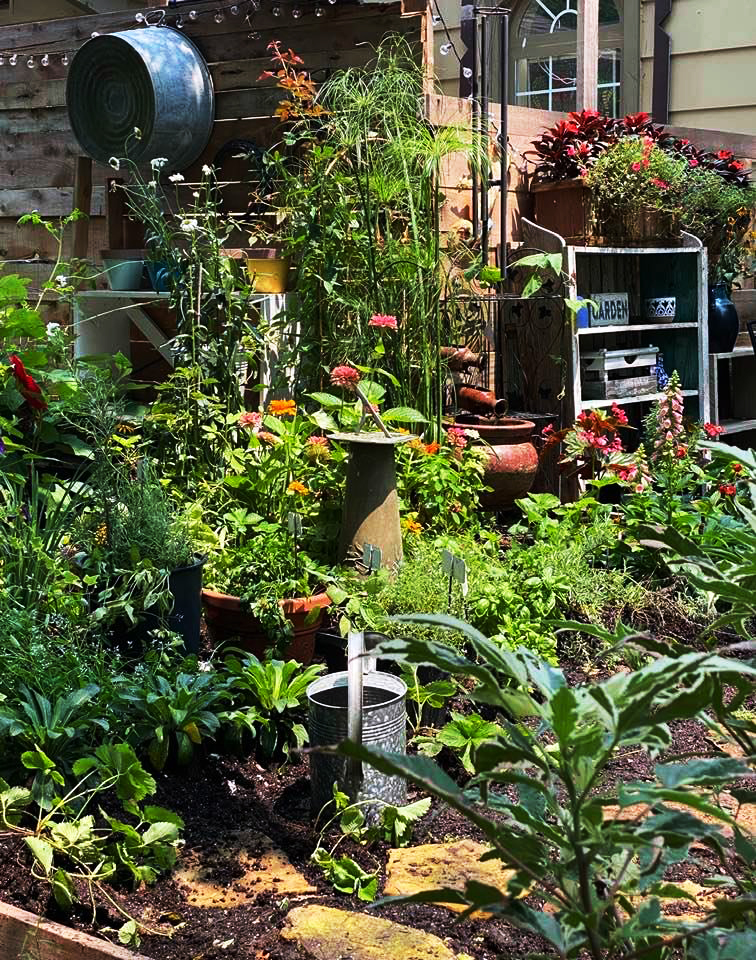
One of my pathways turns off the main path and circles behind the back wall of my garden.
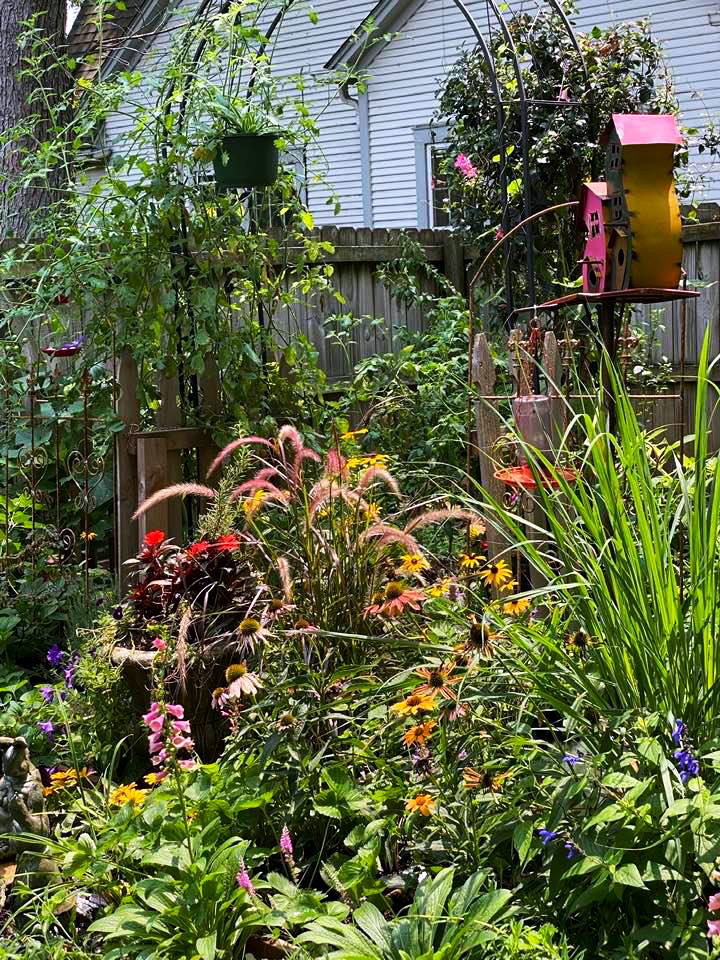
Another of my paths turns the other way and runs beneath an iron trellis.
A vacant house currently ruins the view when I look in this direction, but soon, I’ll have vines and other tall plants which obscure that problem.
Better Homes and Gardens says that cottage gardens are free and unrestrained, and my garden is definitely that:
“Cottage gardens don’t look designed. In fact, they’re usually exuberant, free-flowering, and sometimes even unrestrained. To get the informal look, avoid planting in straight lines or defined patterns. Let plants cascade over paths and weave through each other. It adds to their charm. And grow self-seeding plants that pop up in unexpected places.”

In fact, my garden is so very lush that my cat is able to hide there and do her bird watching.
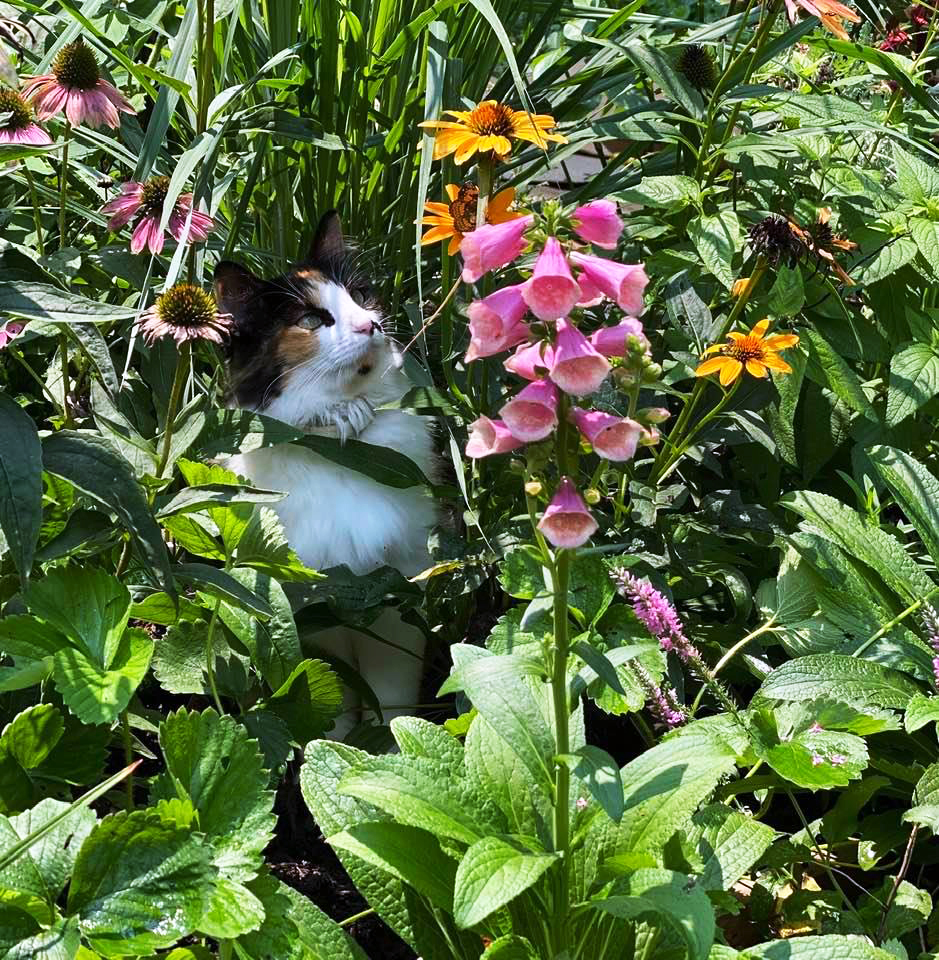
And as far as informal goes, i’ve said before that I am a Black-Eyed Susan Kind of girl. I am not a Hybrid T:
Better Homes and Gardens advises the cottage gardener to grow old-fashioned flowers:
“Cottage gardens aren’t about new varieties. They’re usually filled with the same traditional favorites your grandmother would have grown. Some popular examples include peony, cosmos, foxglove, snapdragon, pansy, bachelor’s button, columbine, bleeding heart, and hollyhocks.”

Jacki Kellum Garden
I grow 3 varieties of Foxgloves, and Hollyhocks are some of my favorite flowers. I grow all the traditional cottage garden plants in my garden:
Better Homes and Gardens says that vintage furniture should be used in the cottage garden, and I have that covered, too:
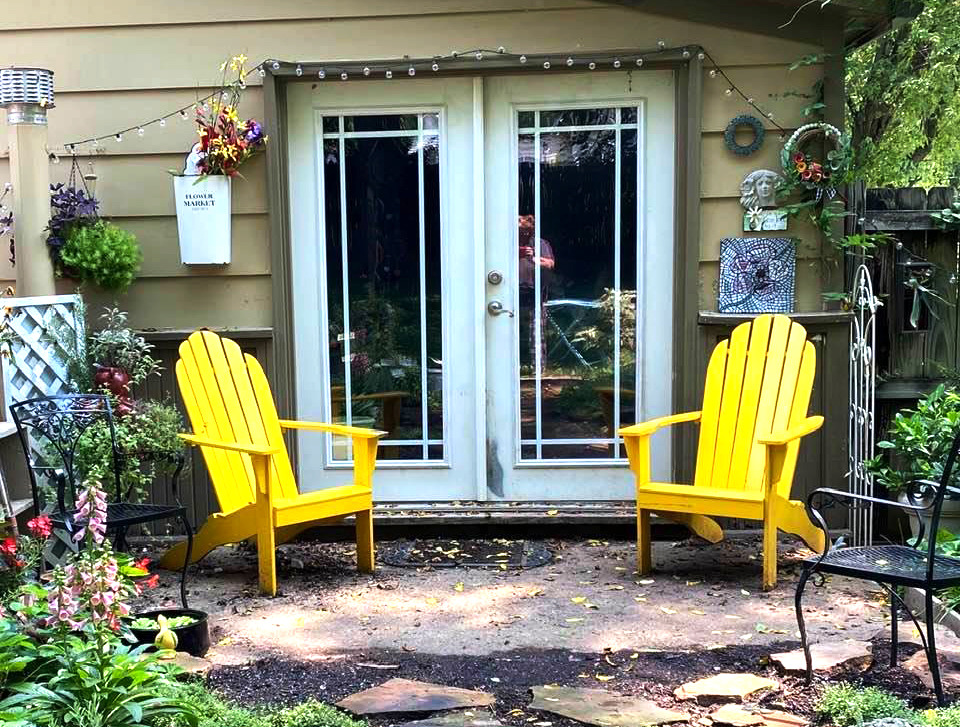
Jacki Kellum Outdoor Room
“Make your cottage garden into an outdoor living space by adding comfy furniture. Avoid anything contemporary. Instead look for Adirondack, wicker, or painted metal shellback chairs. The furniture doesn’t have to match: Part of the charm is how informal it is. An eclectic mix fits right in.”
I have bright yellow Adirondack chairs right outside my back door, and I have old porch rockers on my front porch.

Jacki Kellum Garde
Sunburst Roses Growing in Front of An Old Picket Fence
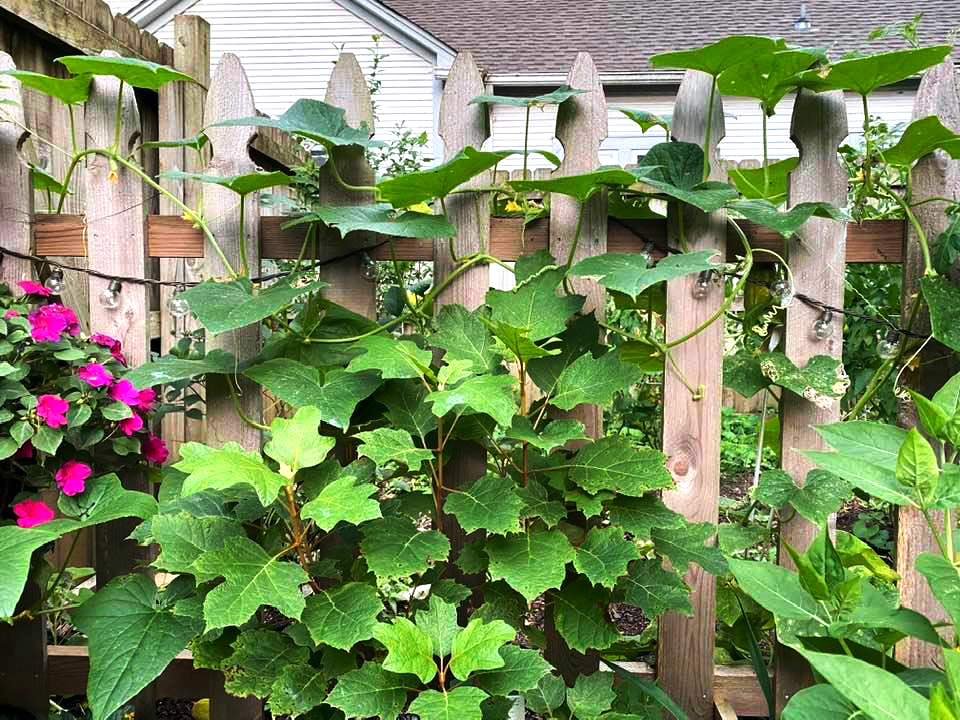
Cucumbers Growing on the Same Picket Fence Later in the Season
Better Homes and Gardens says to use picket fence in the cottage garden. I have natural picket fence in the back and white picket fence in my front.
I have read several good articles that detail the elements of a cottage garden, but this one from BHG online is one of the best:
https://www.bhg.com/gardening/design/styles/cottage-garden-design-tips/
